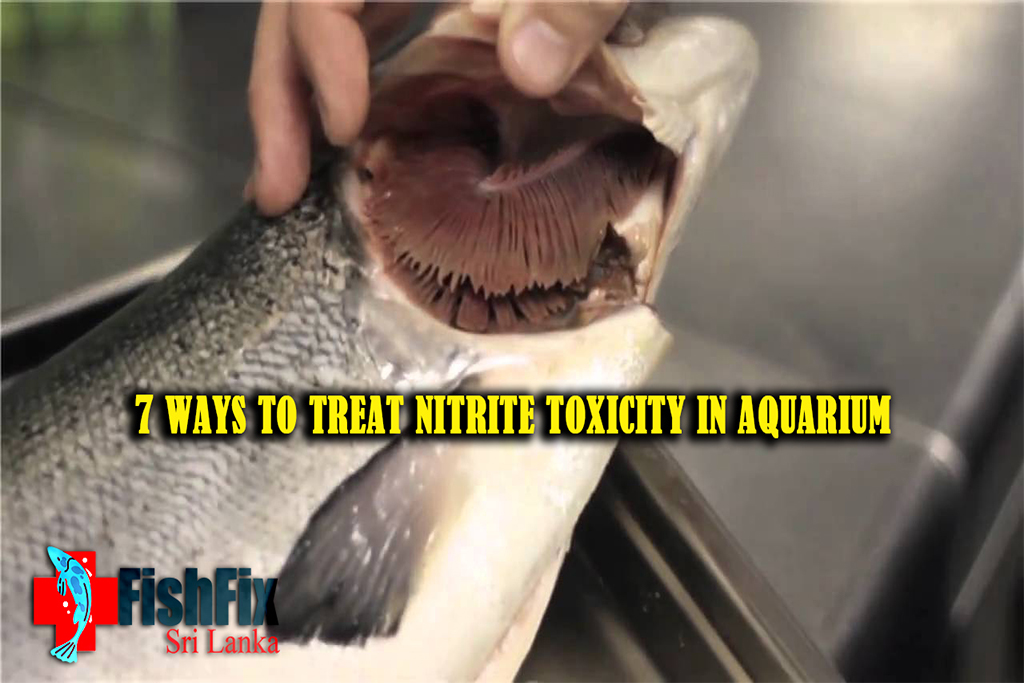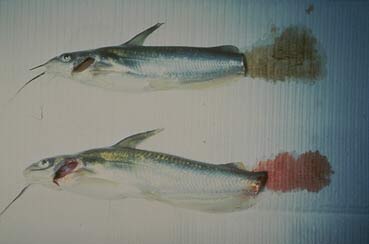- Your cart is empty
- Continue Shopping
7 Ways To Treat Nitrite Poisoning In Aquarium Fish
-
Irosh Akalanka
- Posted on
- 2 comments

Page Contents
ToggleWhat is Nitrite Poisoning ?
Nitrite is produced by the bacterial oxidation of ammonia. It is toxic to fish but less so than ammonia. New tanks commonly experience high levels, due to the slow multiplication and insufficient numbers of Nitrobacter and the other microorganisms that convert nitrite into nitrate.
Nitrite nitrifiers are also inhibited by ammonia. A high ammonium concentration in alkaline water (e.g., seawater) is toxic to NOB (nitrite-oxidizing bacteria), which results in a solely AOB (Ammonia oxidizing bacteria) population in a new aquarium.
In ponds, nitrite poisoning is common in falls because the temperature optima of AOB and NOB are different, resulting in nitrite accumulation.
Clinical Signs of Nitrite Poisoning
- Listlessness
- Dyspnoea (difficult or labored breathing) and gasping at the surface
- Dark brown gills
- Death
Nitrite is actively transported across the gill, where it enters the bloodstream and oxidizes hemoglobin (Hb) to methemoglobin (MetHb). Methemoglobin cannot transport oxygen efficiently, so tissues are deprived of oxygen. While oxygenated Hb is red, MetHb is brown. So fish with nitrite poisoning often have pale tan or brown gills.
Also, grossly brown gills or blood is not always evident when nitrite poisoning occurs. Nitrite-poisoned fish can die with pink gills and blood. This might be due to the fact that the fish may die from nitrite-induced hemolytic anemia rather than nitrite toxicity and because nitrite can damage not only hemoglobin but other vital, porphyrin-containing proteins, such as cytochromes. Exposure of fish to very high nitrite concentrations is also associated with the accumulation in the spleen of foci of iron-containing (Prussian blue positive staining) macrophages caused by increased erythrocyte destruction.

How to Test Nitrite in the Fish Tank
Colorimetric kits can be used for nitrite measurement. Analyses measure nitrite – nitrogen, which can be converted to total nitrite, using a conversion factor of 3.3. For example, if the nitrite – nitrogen (NO 2 – N) measurement of the kit is 0.10 mg/l, the amount of nitrite present is 0.33 mg/l.
The susceptibility of tropical aquarium fish to nitrite is unknown; however, it is best to keep levels low ( < 0.10 mg/l) to avoid any possible toxicity. Long-term (over 6 months) exposure to even very low nitrite levels (0.015 – 0.060 mg/l NO 2 – N) can result in mild methemoglobinemia in some fish.
If the water is naturally high in chloride (e.g., coastal aquifers) or chloride has been added, diagnosis of nitrite poisoning also requires measurement of Cl −. Colorimetric tests and electronic probes are available. Nitrite toxicity is affected by many other factors, including pH, fish size, previous exposure, nutritional status, and dissolved oxygen level. Thus, it is best to keep levels as low as possible, especially for species with unknown susceptibility.

Nitrite Test Kit
7 Ways To Treat Nitrite Toxicity In Aquarium
Aquarium
- 25% to 50% water change (daily to weekly,
depending on nitrite concentration) - Add nitrifying bacteria
- Add chloride (Aquarium Salt)
- Enhance biological filtration
- Decrease density
- Reduce temperature
- Reduce feeding
PONDS
- Add chloride (Aquarium Salt)
- Maintain the highest DO possible
Treatment success depends on the severity and duration of toxicity. Chloride ions competitively
inhibit nitrite absorption over the gill epithelium; therefore, adding salt to the water often alleviates clinical signs. After measuring the level of nitrite, 3 mg of non-iodized salt (sea salt) per liter can be added for every 1 mg of nitrite per liter detected by the test method.
Obtaining an exact measurement of nitrite with standard colorimetric chemical test kits can be difficult and this dosage should be considered a minimum starting point. Partial water changes every 2-3 days can be used to remove nitrite from the system. Clinical signs will often resolve 24 hours after lowering nitrite levels. Increasing aeration will ensure maximum dissolved oxygen levels and minimize environmental hypoxia. Adding a proprietary solution of filter bacteria or some medium from a mature filter system will help to establish or repopulate the biological filter.
Even dilute brackish water probably has enough chloride to prevent nitrite toxicosis in most euryhaline species. For example, 1 ppt seawater contains over 500 mg/l chloride. Clinically encountered nitrite levels have never been shown to be toxic to fish in seawater, probably because of seawater’s high chloride
content. However, there are few studies on nitrite’s effect on tropical marine reef fish, so it is advisable to keep nitrite levels in marine aquarium low. Bicarbonate is also somewhat protective against nitrite but considerably less than chloride. High dietary ascorbate levels also protect against nitrite-induced MetHb formation.


2 Comments